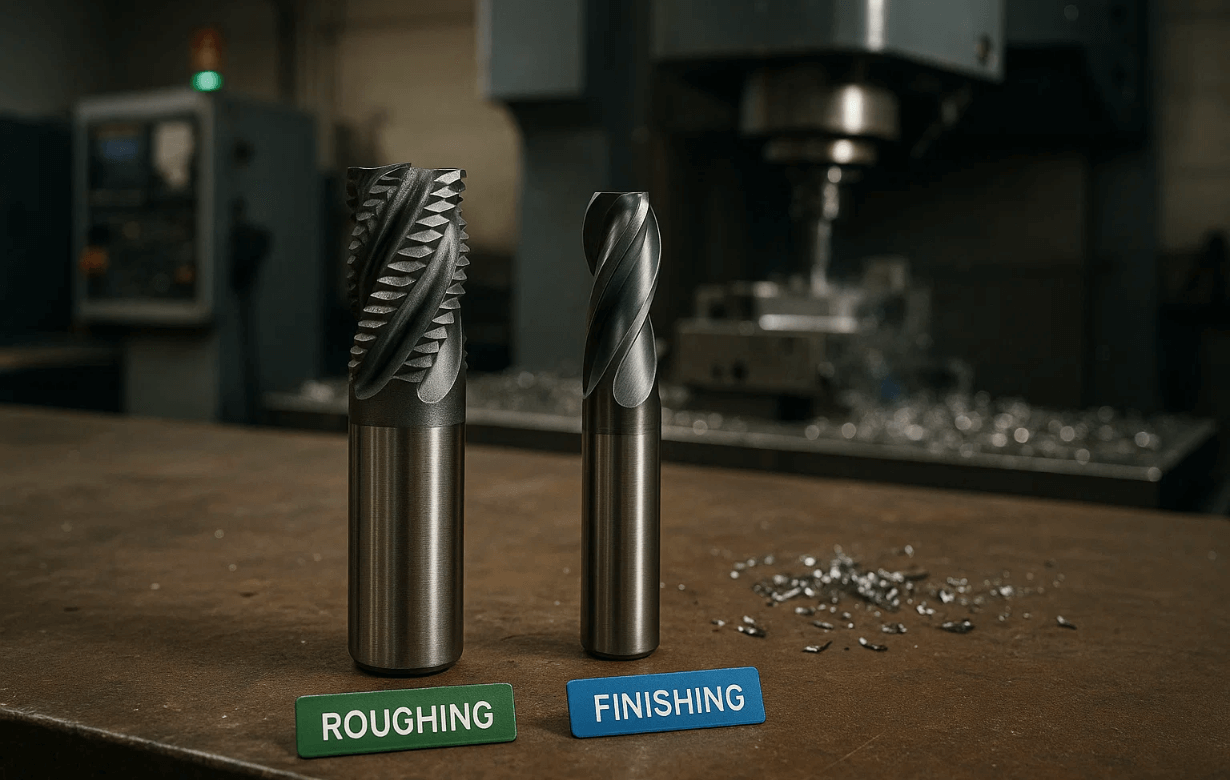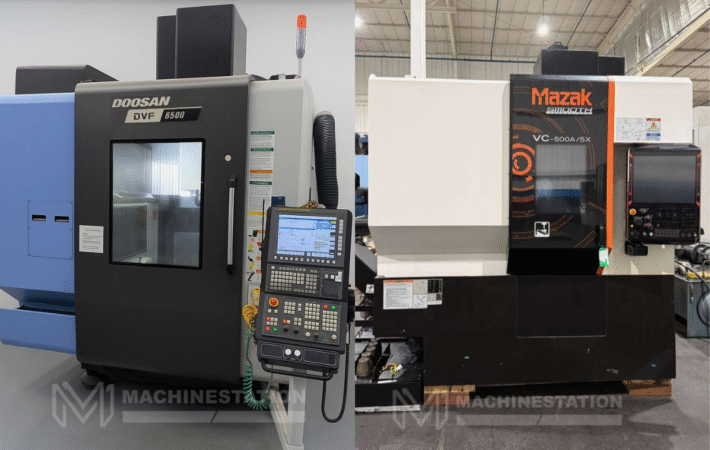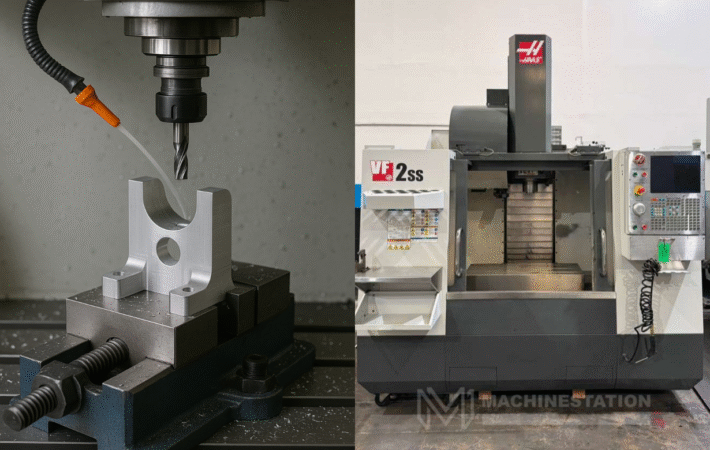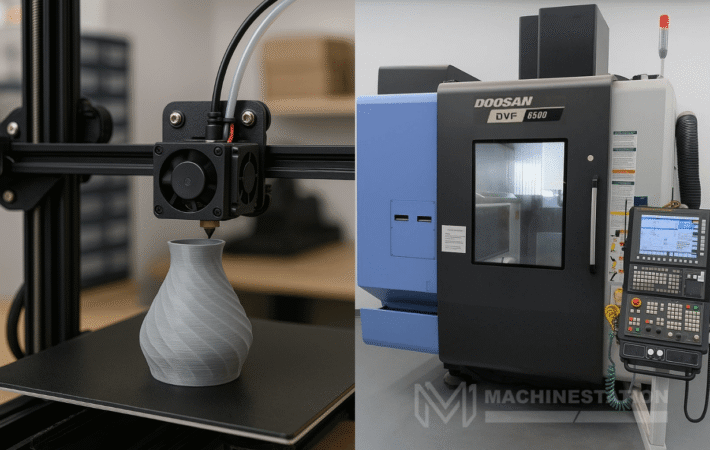The entire CNC machining process involves cutting a raw material workpiece into a desired shape and providing it with top-notch surface finishing, ensuring the end product has commercial value and can be used for its intended purpose. The entire process of CNC machining can be divided into two stages: roughing and finishing, each with its own set of tools. Their applications are different as they both have different use cases, advantages, and limitations. So, if you are curious about knowing what are the major differences between the roughing and finishing tools then you must read it till the end.
What are Roughing Tools?
Roughing tools are designed for the initial stages of the CNC machining process. It is employed for removing a significant amount of material quickly from the workpiece in an efficient manner. It focuses on shaping the raw material close to the final product. They are characterized by their robust designs and the ability to work through aggressive cutting conditions.
Key characteristics of the roughing tools:
Here are some of the major features of the roughing tools used by the CNC machines:
- High Material Removal Rate (MRR): The roughing tools operations are focused on maximizing the MRR, which is often more than 100cm3/min for metals. But for materials like aluminum, rough milling might exceed the speed of 500cm3/min.
- Aggressive cutting edges: Wavy or serrated cutting edges are often featured in roughing tools, which are also known as “hog mills”, which further help in breaking up chips and reducing the cutting forces.
- Coarser pitch: The roughing tools often feature a tooth spacing or a coarser pitch that helps with better and more aggressive material removal. This design of the tools helps them to withstand high machining stress.
- Larger flutes: Roughing tools generally feature a lesser number of flutes but larger ones which helps in the removal of the larger chips and deeper cuts with each pass.
- Time allocation: Roughing generally takes 60-80% of the total machining time because of its work needs for removing maximum materials.
Advantages of roughing tools:
- They help in rapid material removal and in an efficient manner.
- The roughing tools are robust which helps in having a pretty long tool life.
- By removing large volumes of materials at a very fast rate, the roughing tools also save a lot of cost.
- The strong tools can handle hard materials and large workpieces without the risk of any major wear and tear.
Limitations of roughing tools:
- It has lower dimensional accuracy and tolerance.
- Leaves the workpiece with a rough surface finish and visible marks.
- Needs subsequent finishing works for final high quality product finish.
What are Finishing Tools?
Finishing tools are employed in the final stage of the machining process. The main focus of these tools is to achieve the perfect dimension, surface finish, and tight tolerances of the product. These tools mainly help in removing the last thin layer of materials left over by the roughing tools.
Key characteristics of finishing tools:
Here are some of the main characteristics of the finishing tools used by the CNC machines:
- Precise cutting parameters: The finishing tools are run at lower feed rates and are able to make shallower cuts which are often under 0.5mm which helps in achieving tight tolerances and fine surface finish.
- Smooth flute design: The flute of the finishing tools of the CNC machine has a smoother flute design resulting in the creation of small sized chips which further helps with finer finishing.
- Lower Material Removal Rate (MRR): The finishing tools of the CNC machines are mainly used for getting accuracy so speed is not a huge factor in them, so the average MRR of a finishing tool stays under 10cm3/min.
- Finer Pitch: The finishing tools of the CNC machines feature a finer pitch or tooth spacing, which helps in bringing precise control over the cutting process. This design of the tools helps in achieving a better surface finish.
- Time allocation: Though the finishing tools focus more on quality than the speed of the machining process, it generally takes 20-40% of the overall machining time to get the job done.
Advantages of finishing tools:
- These tools ensure a high quality surface finish, which is very important for both functional and aesthetic purposes.
- Finishing tools help in achieving tight tolerances, which are often within ±0.025 mm or better.
- Finishing tools reduce the need for further post machining processing works.
- Finishing tools make a final product that is ready for assembly.
Limitations of finishing tools:
- These tools have a very slow material removal rate.
- The tool cost can be potentially higher due to the need for sharper and more specialized tools.
- These tools have longer machining times per pass.
Differences between roughing and finishing tools:
Here’s an easy chart explaining the key differences between roughing and finishing tools:
| Feature | Roughing tools | Finishing tools |
| Purpose | Remove bulk material quickly | Achieve final dimensions and surface finish |
| Cutting Edge Design | Serrated/wavy, aggressive | Smooth, sharp, precise |
| Number of Flutes | Fewer, larger | More, smaller |
| Feed Rate | High | Low |
| Depth of Cut | Deep | Shallow |
| Material Removal Rate | High | Low |
| Surface Finish | Rough, visible marks | Smooth, refined |
| Dimensional Accuracy | Low | High |
| Tool Cost | Lower (can use older tools) | Higher (requires sharp, specialized tools) |
| Machining Stage | Early (before finishing) | Final (after roughing) |
Best practices for using roughing and finishing tools during CNC machining:
Here are some more key recommendations that you should keep in mind while using any of the two types of tools while doing CNC machining works:
- Roughing tools should be used at higher feed rates helping in higher material removal rates.
- Finishing tools must be used at lower feed rates to help achieve precise dimensions and better surface finish.
- Regularly inspect the tool conditions, especially if there is any wear and tear because that can cause damage to the tool’s performance and product quality.
- Optimize the machining parameters like cutting speed and depth of cut to ensure the best quality of tool performance and develop the best products.
Conclusion:
Both roughing tools and finishing tools are equally important in the CNC machining process, one helps with the initial cutting while the other brings the final aesthetic shapes. Both have their strengths and weaknesses and need to be rightly machined by the operator for optimal performance.
If you are someone who is planning to buy used CNC machines, then you can check our collection at MachineStation. If you can’t find the right fit there, then let us know your requirements in the Machinery Locator and we will try to help you out.






